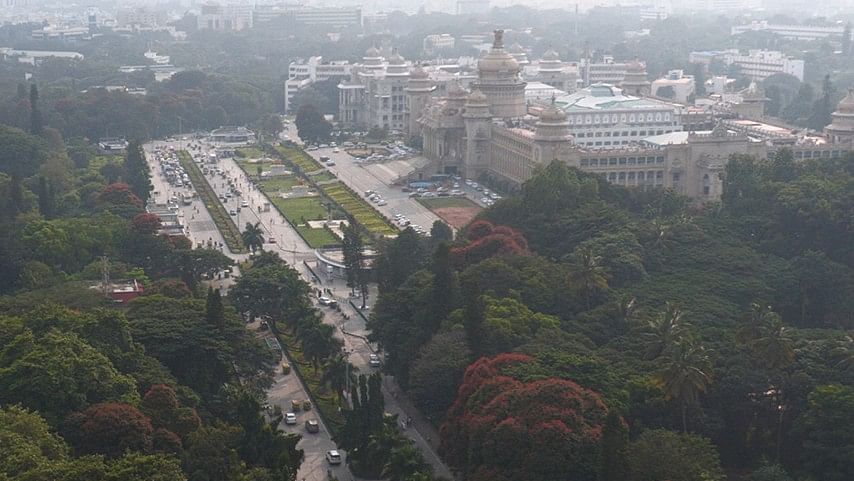
View of Bengaluru city
DH Photo
This is a recollection of life in Bangalore (long before it became Bengaluru) from the 1940s to the 1960s. I was born and brought up here. Back then, a typical family meant a father, a mother, and at least six children— sometimes more. It wasn’t uncommon to find families with 10 to 16 children, with the father sometimes struggling to keep track of who was older, as younger siblings often ended up in higher classes at school than their older siblings!
Along with parents and children, there would be an elderly grandparent or two, and sometimes a relative’s children sent to stay for schooling. With colleges scarce in smaller towns, many children were hosted for education. We never minded sharing our home, as guest children would pitch in with household chores and help younger ones with homework.
There were usually no more than two rickety bicycles in most households. While riding them, some parts would fall off along the way—reminiscent of Ramayana’s Seethadevi dropping her belongings while being kidnapped by Ravana leaving a trail to show Rama the way.
Few houses owned a radio. In our street in Shankarpuram, ours was the only house with one in the 1940s. One could find a small group of people gathered outside our house, eager to catch snippets of cricket commentary or Binaca Geethmala.
It may surprise today’s generation, but both cycles and radios required a licence, which was issued at the post office.
Our day began at 5 am with the larks, followed by bathing and coffee — no breakfast! By 9.30 am, a sumptuous, hot lunch was served, and family members either went to school or work. Children would return from school by 4 pm, snack, and then go out to play. Girls played games like kuntebille (hopscotch), while boys had their own games. By 6.30 pm, as the street lights came on, we trooped back home.
In the evenings, it was common to see all the children sitting in a row completing their homework. As a rule, all of us, though studying in different classes, read our lessons aloud, creating a chorus of overlapping sounds— some would be reading history while others would be reading Kannada or English; some wise ones, like yours truly, gleaned knowledge from the cacophony!
After dinner around 8 pm, the children went to bed. The man of the house and older brothers would listen to the 9 pm news on the radio, and without fail, at exactly 9 pm, the city’s lights would flicker and the radio would beep to life. The English news began with familiar voices: “This is All India Radio. Here is the news read by Roshio Menon (Pearson Surita, Melvel de Mellow, Chakrapani, Sushil Zakeri were among other newsreaders). The Prime Minister, Mr Jawaharlal Nehru, today inaugurated the Hirakud Dam. The Speaker, Mr Anantha Shayanam Iyengar, said…”
By 10.30 pm, everyone slept, except for the mother and older sisters who had to clean up. Well, that was life!